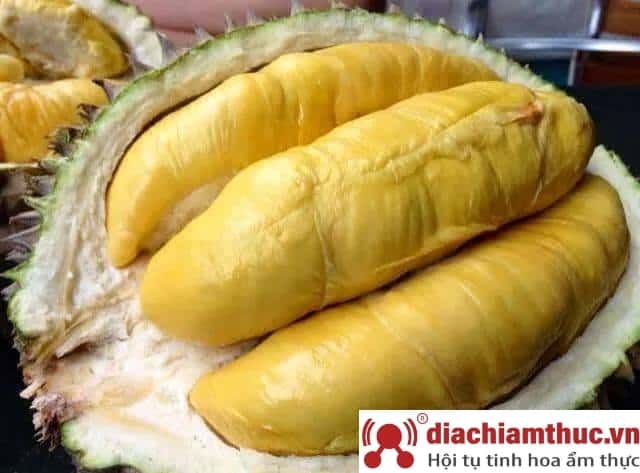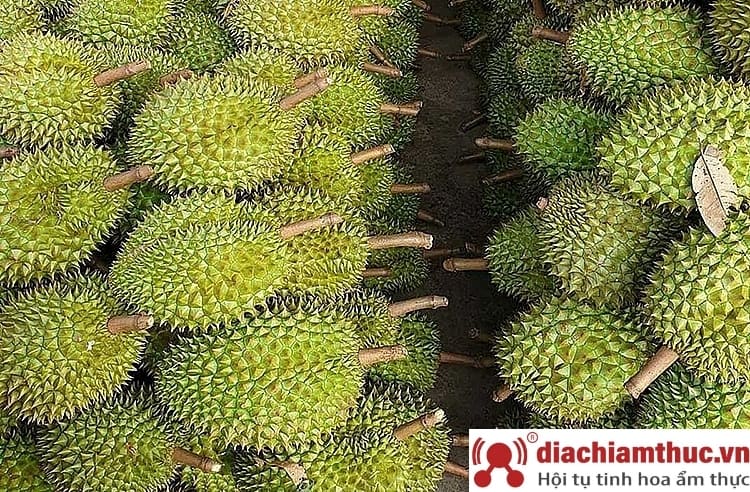Khanh Son is a district located in the southwest of Khanh Hoa province, bordering Cam Ranh, famous for its delicious durian. Not only wrong, large fruit, but Khanh Son durian is considered by consumers to be much better than durian in many other regions of the country, with the characteristics of dry meat, yellow rice, and flat seeds.
Khanh Son durian
Currently, Khanh Son durian is currently one of the top 50 fruit specialties of the famous Khanh Hoa in Vietnam officially established by the Vietnam Record Book Center. Because of the high quality of durian, the price of Khanh Son durian is also quite high compared to durians of neighboring provinces, but it certainly won’t be a waste of money to taste it!
Khanh Son Durian Nha Trang
Reference address:
- Khanh Son Durian: To Hap Town, Khanh Son. If you are in Nha Trang, please contact us by phone: 0966.709.310.
Source: Collected internet.
The North and North Central regions have a humid subtropical climate with 4 seasons: Spring, Summer, Autumn, and Winter. The Central and South Central regions have a tropical monsoon climate, the extreme South Central and Southern regions have tropical savanna characteristics. At the same time, it is directly influenced by the trade monsoon climate, which often blows in low latitudes. The South often has a tropical savanna climate, hot and humid with two seasons: dry season and rainy season (from April-May to October-November). Every year, the cold and humid winter typical of the North contrasts with the warm atmosphere of Tet and spring in the South.
Vietnam, whose national name is the Socialist Republic of Vietnam, is a socialist country located at the eastern tip of the Indochina peninsula in Southeast Asia, bordering Laos, Cambodia, China, and the sea. East and Gulf of Thailand. The territory of Vietnam has been inhabited since the Paleolithic era, starting with the states of Van Lang and Au Lac. Au Lac was annexed by the Trieu Dynasty in the North in the early 2nd century BC, followed by a period of Northern domination lasting more than a millennium. The independent monarchy was re-established after Ngo Quyen's victory over the Southern Han dynasty. This event paved the way for independent dynasties to succeed and then repeatedly win against wars of invasion from the North as well as gradually expanding to the south. The final period of Northern domination ended after the Lam Son insurgent army's victory over the Ming Dynasty.
Vietnam's history began from 1 to 2 thousand years BC. Over many centuries with the Ly, Tran, Le, and Nguyen dynasties, from the mid-19th century, Vietnam became a French colony. After the August Revolution, the Democratic Republic of Vietnam was born. The Battle of Dien Bien Phu in 1954 marked the end of the French in the territory, but Vietnam was divided into two countries: the Democratic Republic of Vietnam in the North and the Republic of Vietnam in the South. After the events of April 30, 1975, Vietnam was unified and from July 2, 1976, officially named the Socialist Republic of Vietnam.
With the support of the local government and cultural sector, 132 Ba Na ethnic households, Ro Ngao branch in Kon Trang Long Loi village, Dak Ha town, Dak Ha district, Kon Tum province built Successful Community Tourism Village, a destination for tourists from near and far when coming to Kon Tum. With the opening of a new economic industry, community tourism is helping people in Kon Trang Long Loi earn more income and improve their lives. This is also a good opportunity for people to preserve and promote traditional cultural values.

